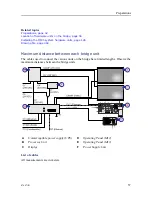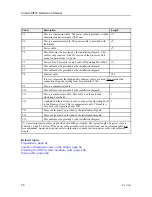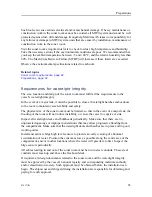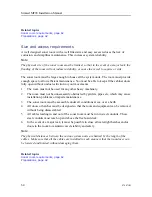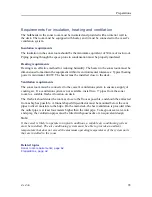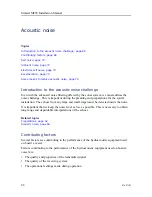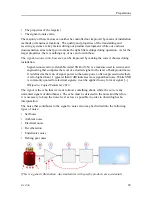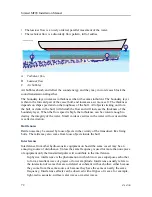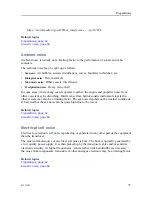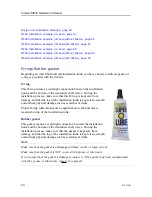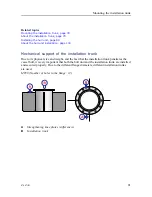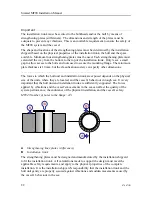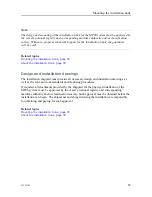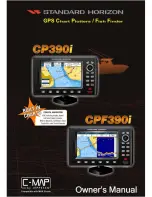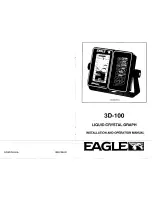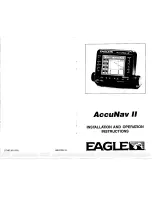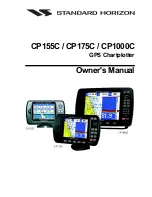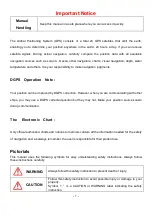
476671/B
71
Electrical noise
Modern vessels are normally equipped with a lot of electric instruments such as
hydroacoustic systems, radars, navigation systems, and communication equipment. Any
electric instruments may in some cases cause electrical interference and noise. International
regulations and certifications are used to control and reduce this, but even these are limited if
the electrical systems are poorly installed and/or maintained.
Propeller noise
Propeller noise is often the main source of noise at higher vessel speeds. Variable pitch
propellers or fast moving propellers usually make more noise than fixed propellers or slow
moving propellers.
Propeller noise is usually water-borne. In some cases, however, shaft vibrations or vibrations
in the hull near the propeller may be structure-borne to the transducer. If a propeller blade is
damaged, this may increase the noise considerably.
Propeller cavitation is a severe source of noise. "Singing" propellers might be a source of
noise, which interferes at discrete frequencies. In some cases static discharge from the
rotating propeller shaft may be quite disturbing.
Cavitation
Cavitation is the formation of small air bubbles
close to the transducer face. The bubbles appear
because the local pressure becomes negative during
parts of the acoustic pressure cycles. The cavitation
threshold increases with the hydrostatic pressure.
The noise is made when the bubbles implode.
Cavitation noise may appear near extruding objects
at higher speeds, but more often it is caused by the
propellers. Propeller cavitation is a severe source
of noise. The cavitation starts when the water flows in the same direction as the propeller
blades. This is where the propeller blades move downwards.
In some cases a resonant phenomenon is set up in a hole near the hull. This sound will have
a discrete frequency, while all other flow noise will have a wide frequency spectrum.
(Image from U. S. Navy in the public domain.)
Flow noise
The upper water layers of the sea contain a myriad of small air bubbles created by the
breaking waves. When the hull moves through water it will cause a disturbance, and this
will generate friction. The friction zone is called the
flow boundary layer
. The water flow in
this boundary layer may be
laminar
or
turbulent
.
Summary of Contents for Simrad MF90
Page 1: ...kongsberg com simrad Simrad MF90 INSTALLATION MANUAL...
Page 2: ......
Page 21: ...476671 B 19 Related topics Simrad MF90 page 13 Simrad MF90...
Page 369: ...476671 B 367 Drawing file...
Page 372: ...370 476671 B Simrad MF90 Installation Manual...
Page 375: ...476671 B 373 Drawing file...
Page 378: ...376 476671 B Simrad MF90 Installation Manual...
Page 384: ...382 476671 B Simrad MF90 Installation Manual...
Page 387: ...476671 B 385 Drawing file...
Page 390: ...388 476671 B Simrad MF90 Installation Manual...
Page 393: ...476671 B 391 Drawing file...
Page 398: ...396 476671 B Simrad MF90 Installation Manual...
Page 421: ......
Page 422: ...2022 Kongsberg Maritime ISBN 978 82 8066 240 8...
Page 423: ......
Page 425: ......
Page 426: ...Installation Manual Simrad MF90...

